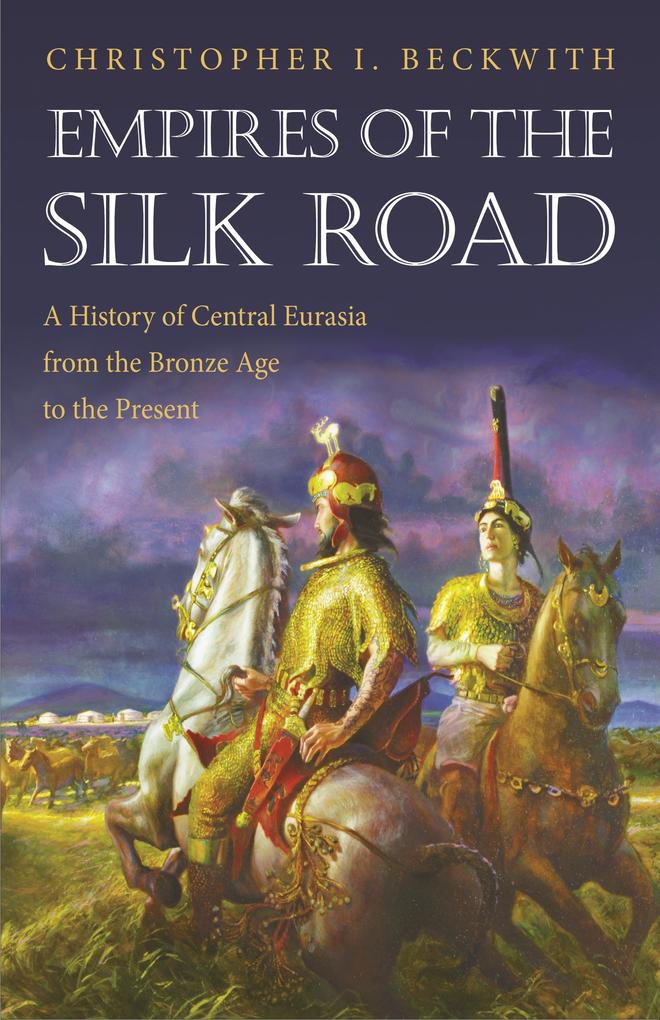"Empires of the Silk Road is a major scholarly achievement. This is the first book to provide a comprehensive account of the history of Central Eurasia from the Bronze Age to the present. But it is much more than a simple narrative of events in what is arguably the most important region for the development of civilization during the past four or five millennia. It is an intellectually ambitious undertaking that attempts to account for essential transformations in the cultural, economic, and political life of societies situated both within the Central Eurasian heartland and on its periphery. Beckwith achieves the radical feat of demonstrating how Central Eurasia is actually key for understanding the dynamics of human history and progress throughout antiquity, the medieval period, and the recent past. Above all, and for the first time, he convincingly shows that Central Eurasia was not a sump of poverty-stricken, unremittingly vicious subhumans, but a wellspring of vibrant, energetic, resourceful, enterprising peoples who facilitated communication and change in all directions. In other words, Beckwith turns conventional wisdom on its head and makes Central Eurasia the core of human history, rather than the embarrassing backwater which it is usually portrayed as. Perhaps his greatest contribution is in the powerful, sustained epilogue, where he shatters a whole galaxy of misconceptions about the dreaded 'barbarians.'"--Victor H. Mair, University of Pennsylvania
"Ambitious, provocative, and bristling with new ideas, Empires of the Silk Road will set off sparks. The book's clearly articulated themes are lively and stimulating, and Beckwith's integration of European, Central Asian, and East Asian materials makes this a major work in Eurasian and world history. In range and depth, this readable book is quite unlike any other."--Peter B. Golden, Rutgers University
"Empires of the Silk Road is a major scholarly achievement. . . . Beckwith turns conventional wisdom on its head and makes Central Eurasia the core of human history, rather than the embarrassing backwater which it is usually portrayed as."--Victor H. Mair, University of Pennsylvania
Inhaltsverzeichnis
PREFACE vii ACKNOWLEDGMENTS xv ABBREVIATIONS AND SIGLA xvii INTRODUCTION xix PROLOGUE: The Hero and His Friends 1 CHAPTER 1: The Chariot Warriors 29 CHAPTER 2: The Royal Scythians 58 CHAPTER 3: Between Roman and Chinese Legions 78 CHAPTER 4: The Age of Attila the Hun 93 CHAPTER 5: The Turk Empire 112 CHAPTER 6: The Silk Road, Revolution, and Collapse 140 CHAPTER 7: The Vikings and Cathay 163 CHAPTER 8: Chinggis Khan and the Mongol Conquests 183 CHAPTER 9: Central Eurasians Ride to a European Sea 204 CHAPTER 10: Th e Road Is Closed 232 CHAPTER 11: Eurasia without a Center 263 CHAPTER 12: Central Eurasia Reborn 302 EPILOGUE: The Barbarians 320 APPENDIX A: The Proto- Indo- Europeans and Their Diaspora 363 APPENDIX B: Ancient Central Eurasian Ethnonyms 375 ENDNOTES 385 BIBLIOGRAPHY 427 INDEX 457














